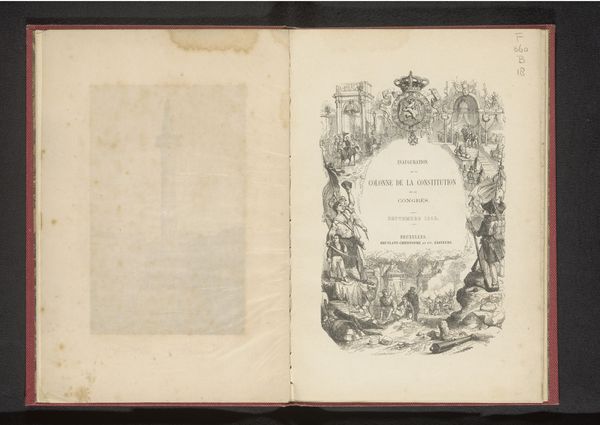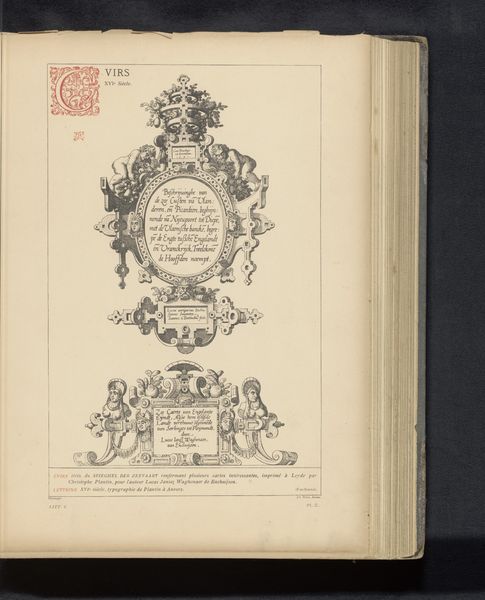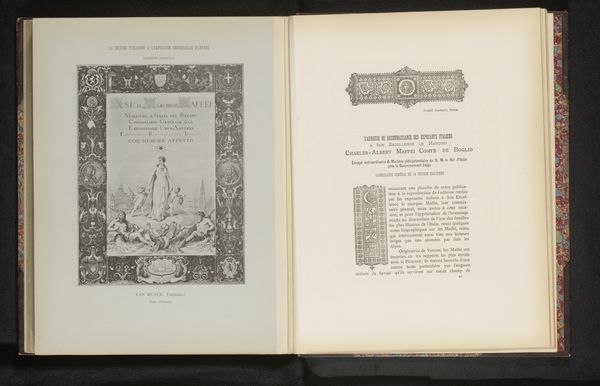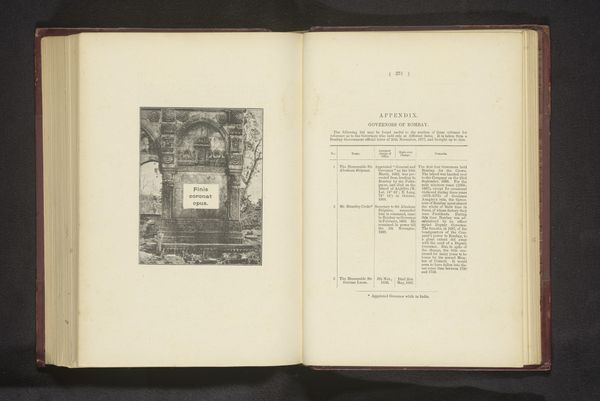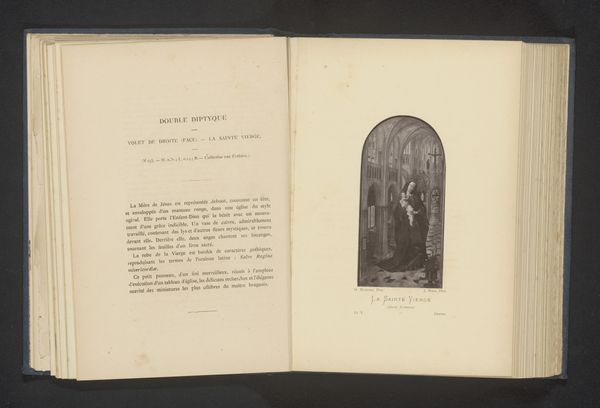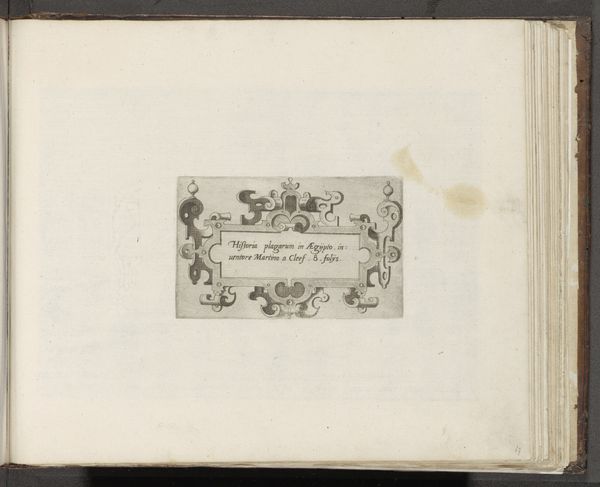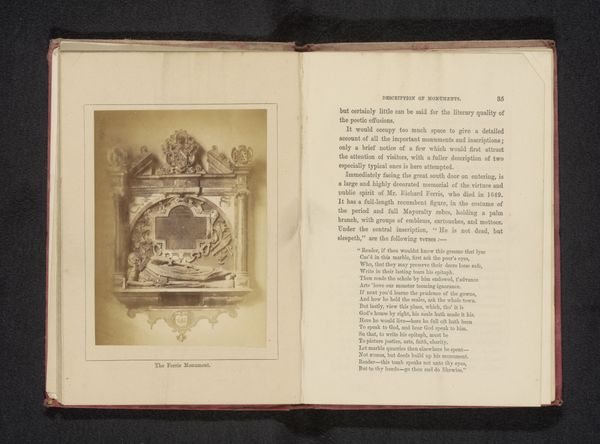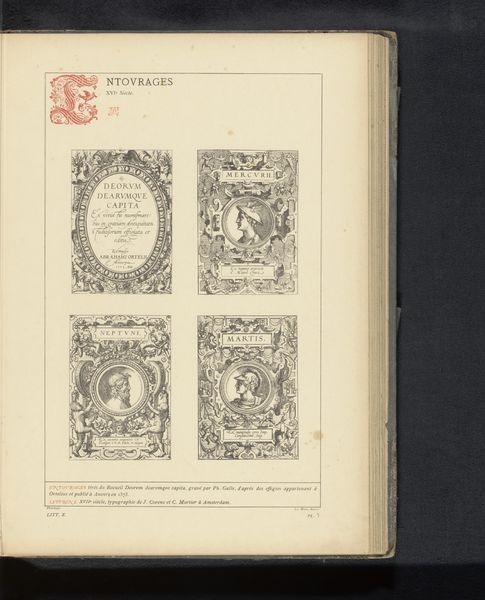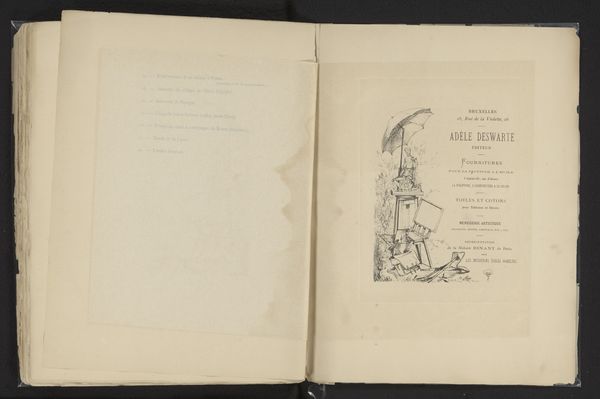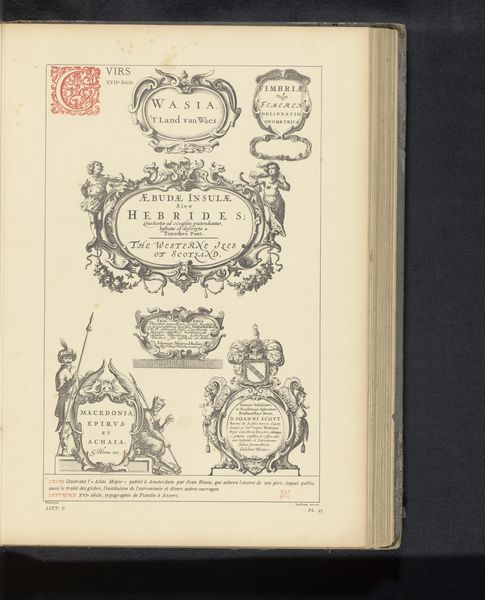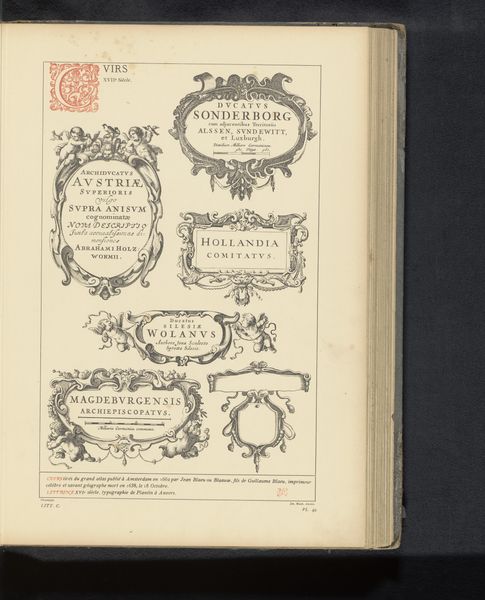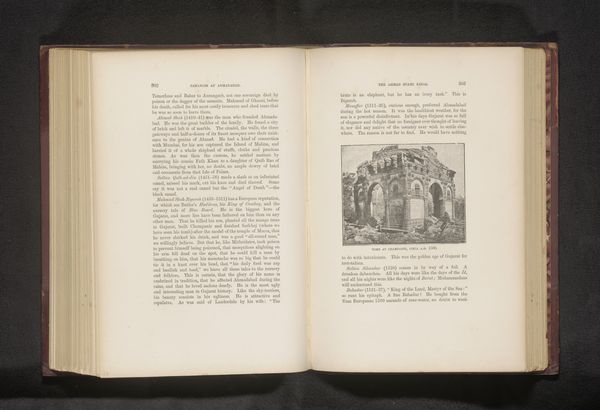
graphic-art, print
#
graphic-art
#
aged paper
#
book binding
#
homemade paper
#
paper non-digital material
#
paperlike
# print
#
sketch book
#
personal journal design
#
paper texture
#
personal sketchbook
#
letter paper
Dimensions: height 216 mm, width 160 mm, thickness 20 mm
Copyright: Rijks Museum: Open Domain
Curator: So, here we have Joseph Maes's "Het huis van Christoffel Plantijn," a print from 1886. It seems like the title page of a book, printed on what appears to be aged paper. Editor: Yes, it definitely has a historical feel. The ornamentation around the text is so elaborate. What really strikes me is the choice of materials—a printed book in the late 19th century seems almost quaint. How do you interpret this work? Curator: I see it as a conscious act of production, highlighting the labor involved in creating and disseminating information at the time. Look closely at the paper, the book binding: consider the process of creating phototypographic plates. The printmaking itself—it’s not just an image, but a product of industry. It prompts us to ask who had access to these materials and this type of publishing. Editor: That’s fascinating. I was mainly focused on the image itself, but thinking about the labor that went into this and the cultural context of book production, specifically printmaking, it gives it a whole new layer of meaning. It really underscores how much value was placed on the printed word. Curator: Exactly. Think about the act of commissioning such a work, the resources needed, the intended audience, and how it would have been consumed in its time. What does it mean to memorialize Plantijn's house in this manner? It begs the question, what were the social forces driving the consumption of such material? Editor: I hadn't considered those economic factors. Now, I see it as a historical document, capturing not just the image but also the socio-economic dynamics surrounding printmaking. Curator: Precisely! And recognizing that shifts our understanding from simple aesthetics to complex historical processes. Editor: I learned a lot, it changed my perspective! Focusing on production is critical to unlocking art's multiple meanings.
Comments
No comments
Be the first to comment and join the conversation on the ultimate creative platform.
